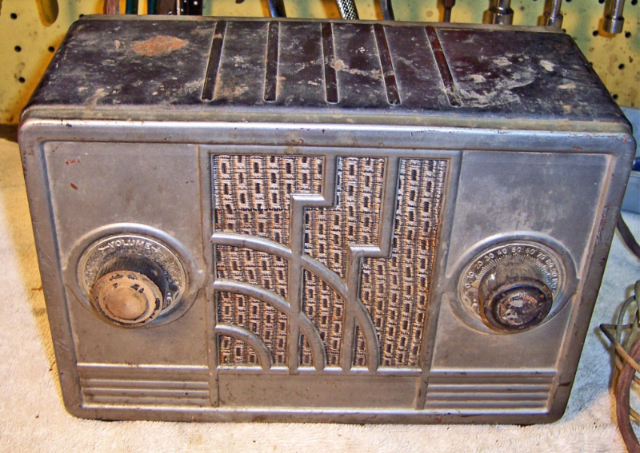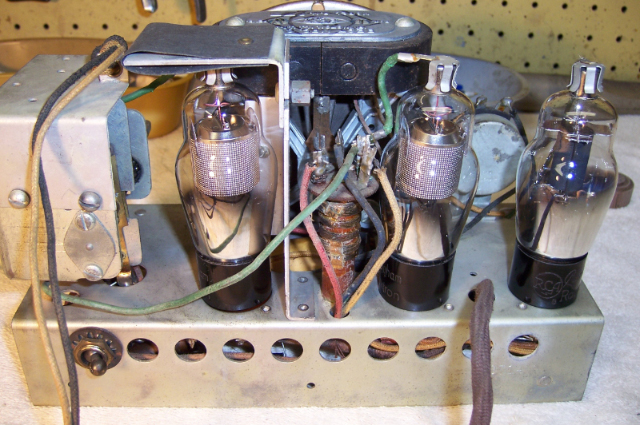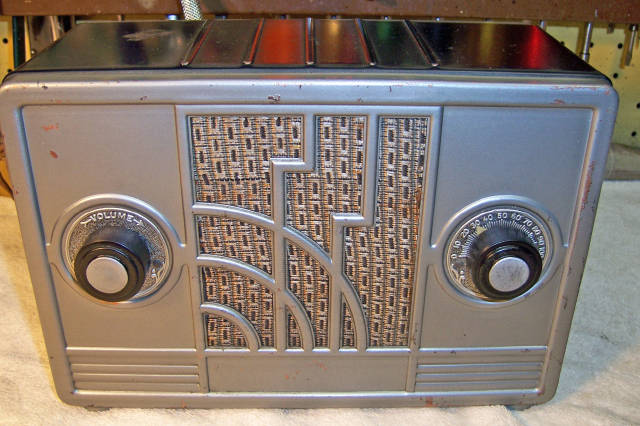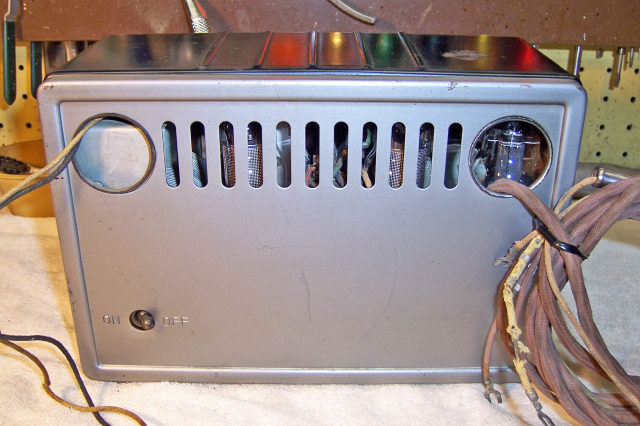
My antique radio restoration logs
This radio, an RCA Model 91-B, was purchased on eBay as untested. It is to me a very unusual radio. It is circa 1934, and thus could be considered a "depression" set, being a low-cost alternative to the more expensive cathedrals, consoles, and tombstone type sets available at the time. The radio is housed in a painted metal (sheet copper!) cabinet which is about the size of a school lunchbox. It is a 3-tube TRF radio, battery operated. It has about the same performance characteristics as the typical 4-tube AC/DC TRF depression sets available at the time.
Photo of the radio prior to restoration

What is unusual about this set is its battery requirements. It uses the then newer "automobile radio" tubes with 6.3 volt filaments (types 77, 78, and 38). Being battery operated, it was likely purchased by people living in rural areas who did not yet have electricity. If that were the case, it does not appear to be a very good fit for that market. It would require a good long antenna and ground in order to pull in signals if the farm were any distance from a major city. It needs a 6-volt storage battery and THREE 45 volt B batteries to operate! The 6-volt battery could be the farm tractor battery or a separate storage battery charged by a motor-generator set or Wincharger. But the 45 volt B batteries would have to be purchased, and would be expensive.
The set was likely very inexpensive to purchase, but looks to me like it would be expensive to operate, and not a good performer. So I wonder who would buy such a radio?
The radio uses a magnetic type speaker and has no output transformer. These types of speakers are not known for their fidelity! I guess it would be OK for listening to the weather or hog reports! While a low-end receiver, it included all the necessary bypassing, screen dropping resistors, output stage quality condenser, and electrolytic B+ filter cap to prevent motorboating when the B battery internal resistance increased. It had a cardboard insert that effectively insulated the metal cabinet from the chassis. Being a battery set, I'm not sure why this was needed.
All the capacitors were rebuilt in their original cases using modern components. The RCA capacitors used in this set are very easy to rebuild, since the insides can be pulled out by the leads - one does not have to melt the tar sealer. I use rosin to reseal the cases (obtained from rebuilding RCA catacombs such as those used in the AR-812). All the tubes were RCA, were good, and likely the originals. Only two resistors were bad: the output tube cathode bias resistor and the detector screen dropping resistor. The output tube bias resistor was inside a piece of insulating spaghetti, so I was able to use a modern 2-watt carbon resistor to replace it (the replacement was not visible). The detector screen resistor was a 2 megohm "dogbone" resistor. I used an NOS 1 meg "dogbone" that had drifted to 1.9 megs and repainted its body in order to maintain originality. All the coils were good, as was the speaker. The chassis were very clean and free of rust. Only dusting was needed.
The power cable was in good shape and was original. All the wiring was in great shape - no Zenith rubber wire here! The radio worked when power was applied. The alignment was then touched up.
Chassis After Restoration



The cabinet was simply cleaned using GoJo and steel wool. It was not repainted. The knobs were repainted.

